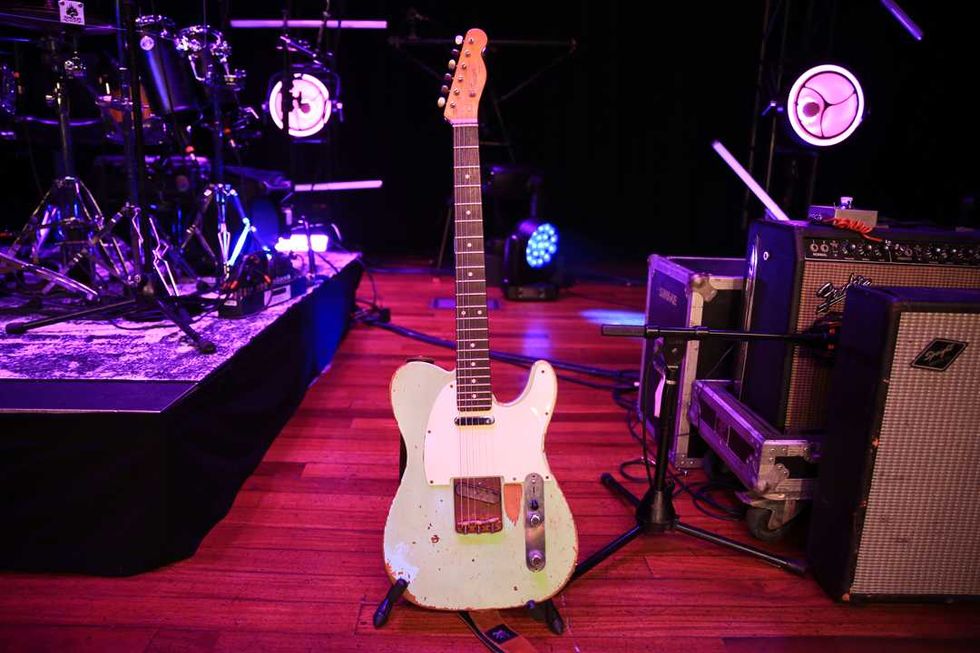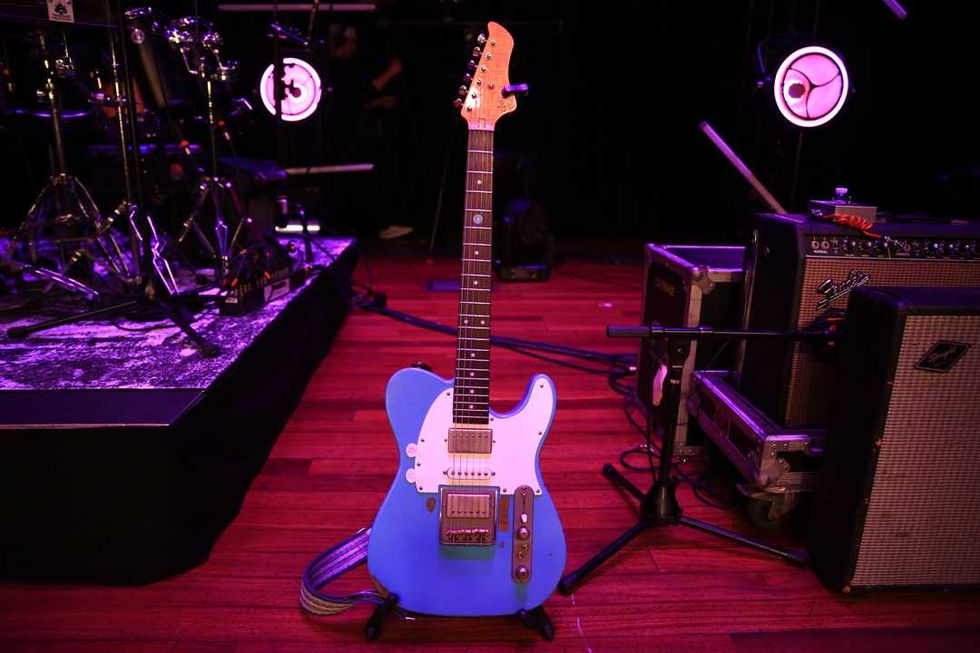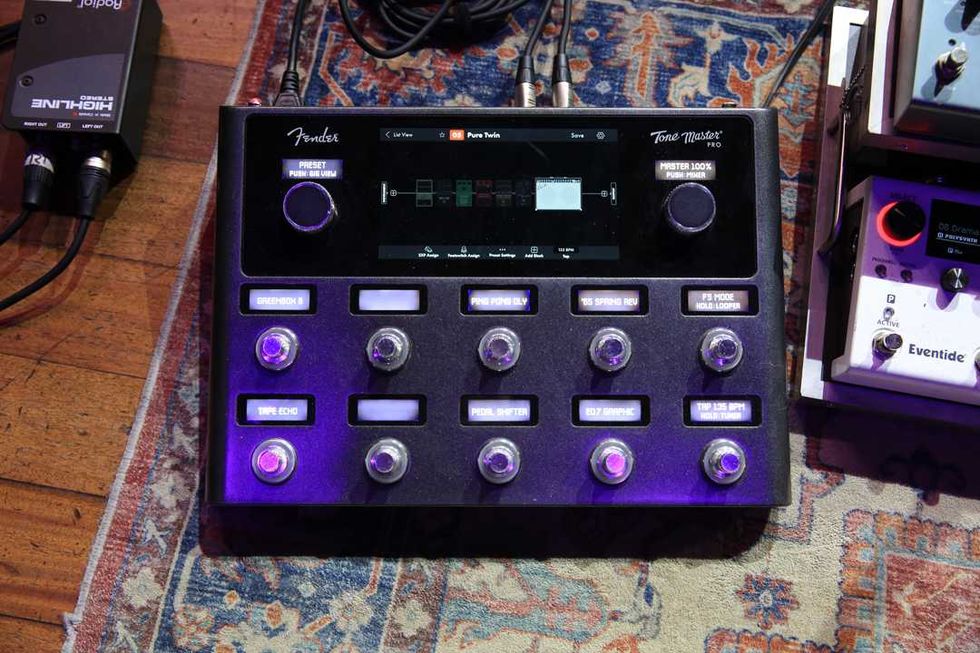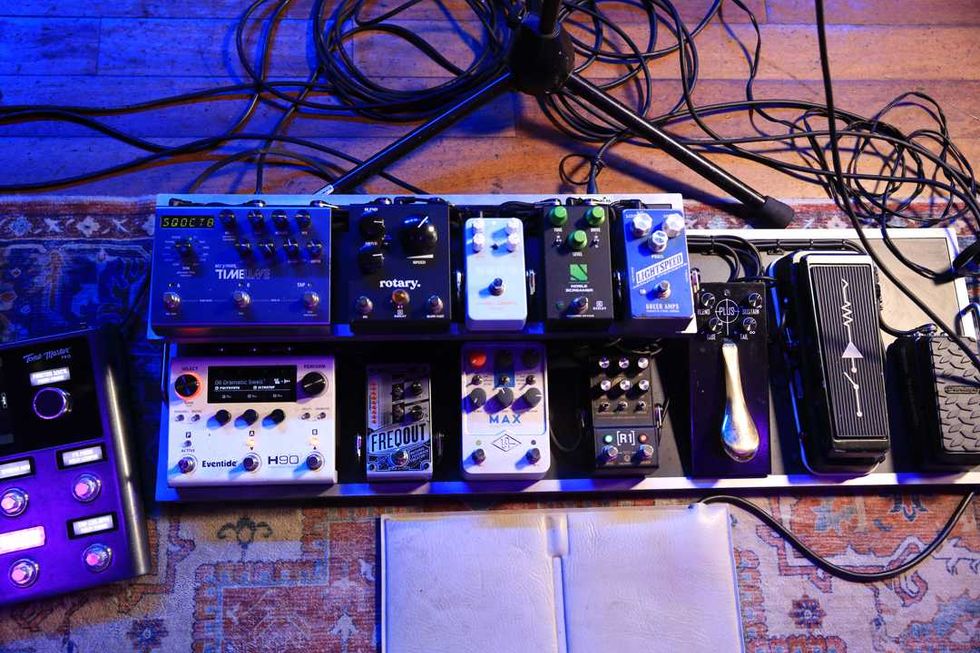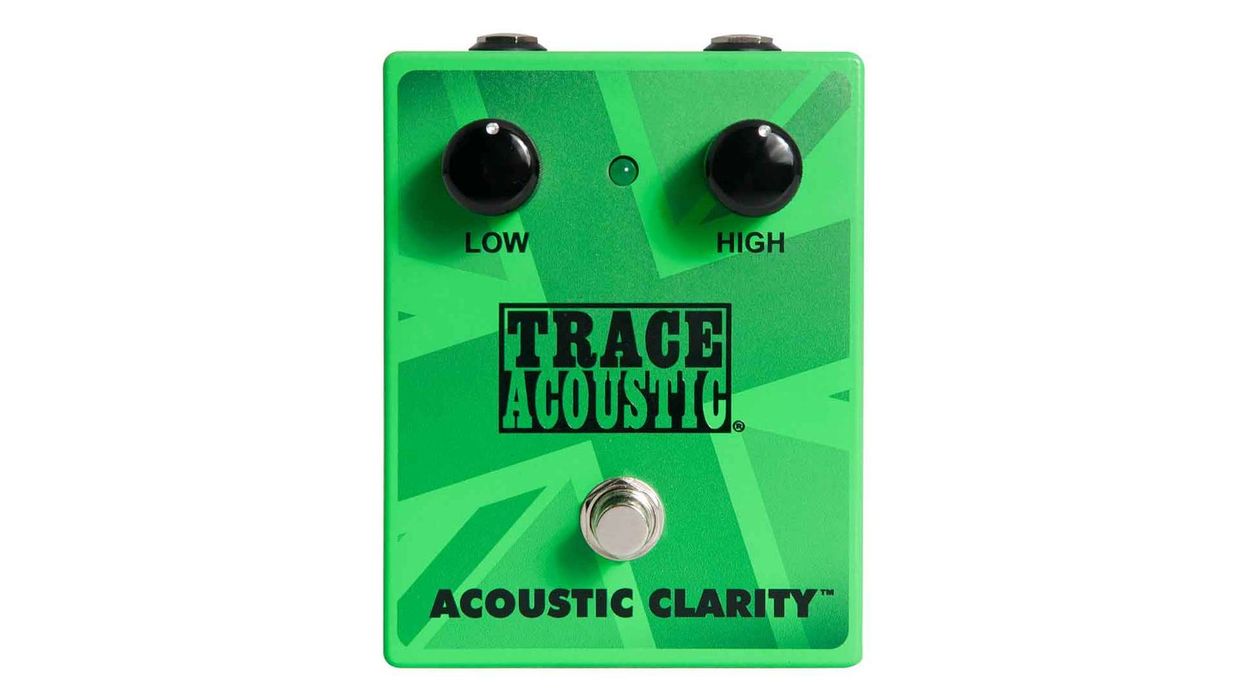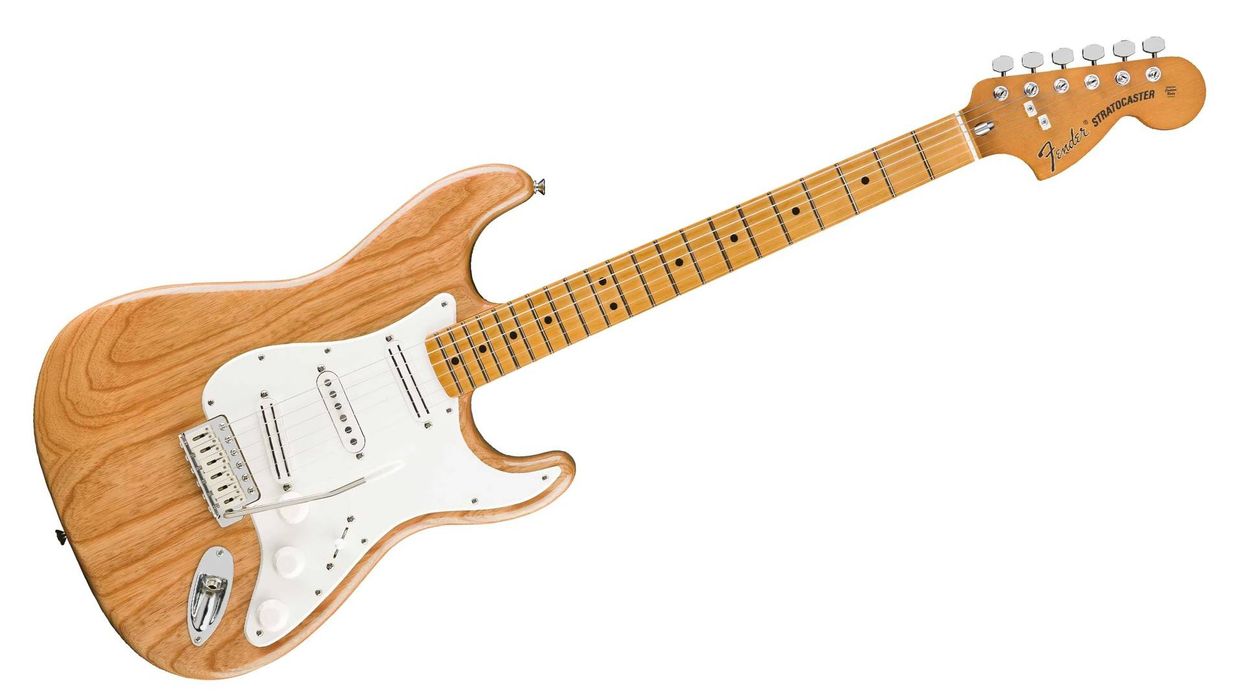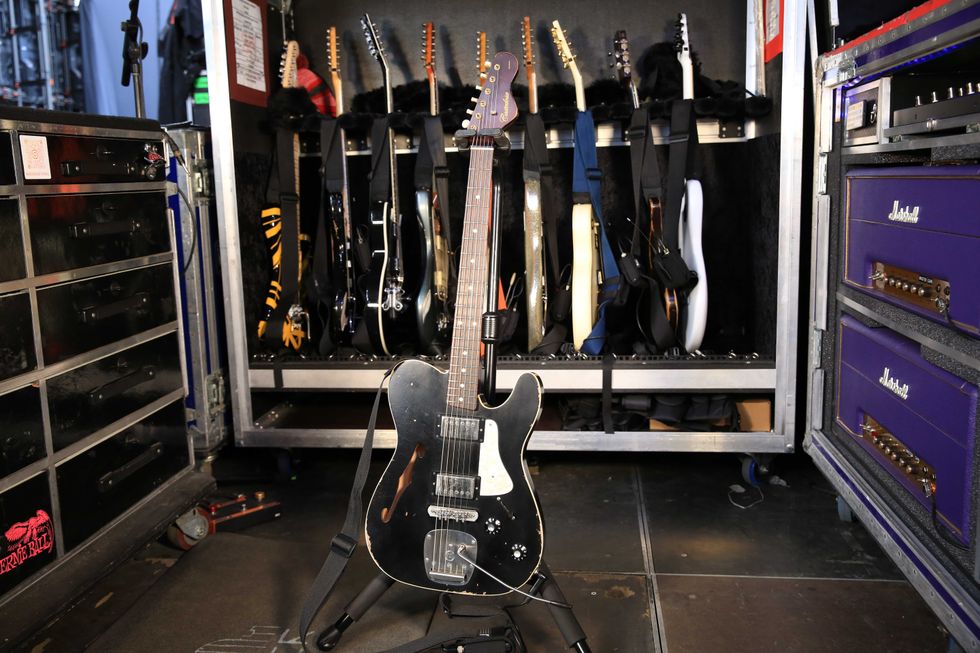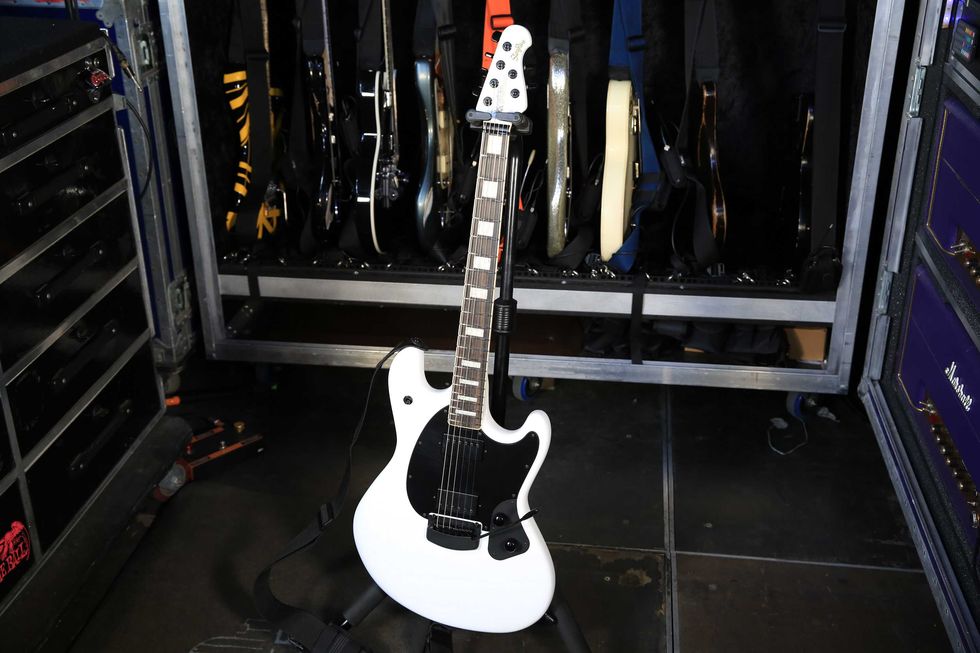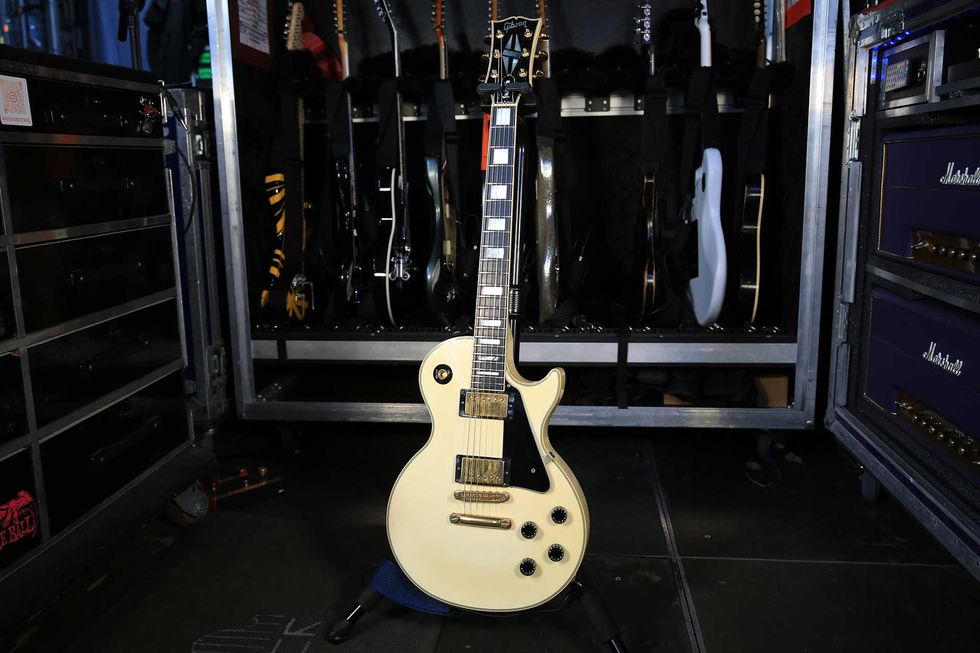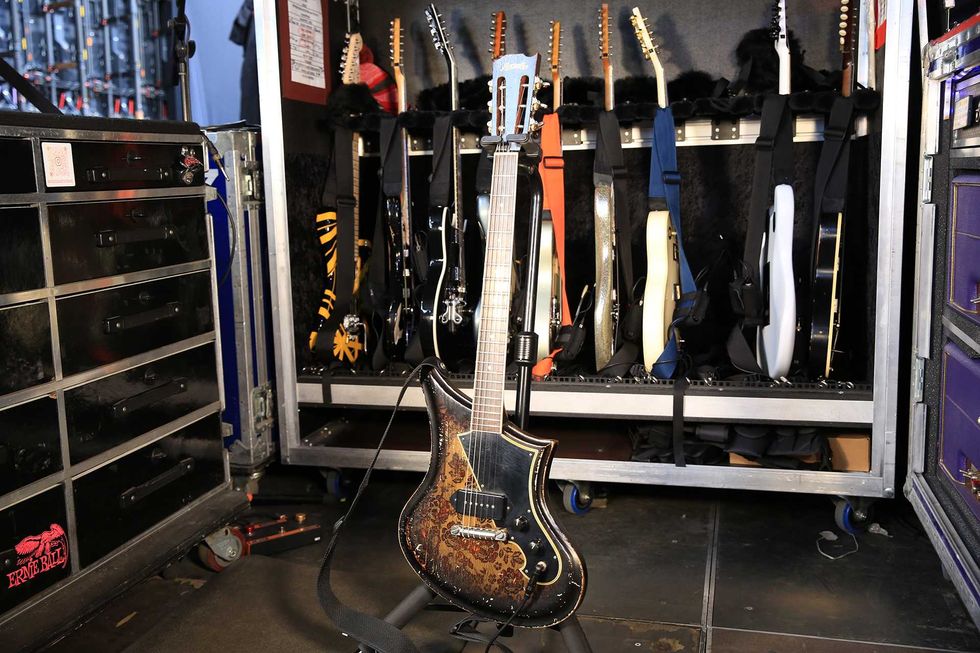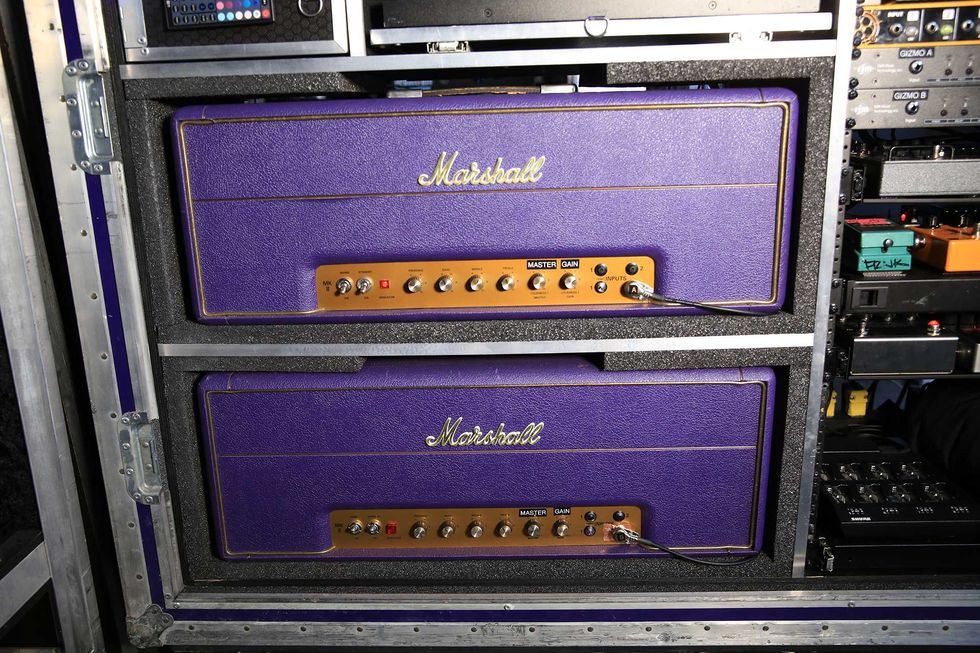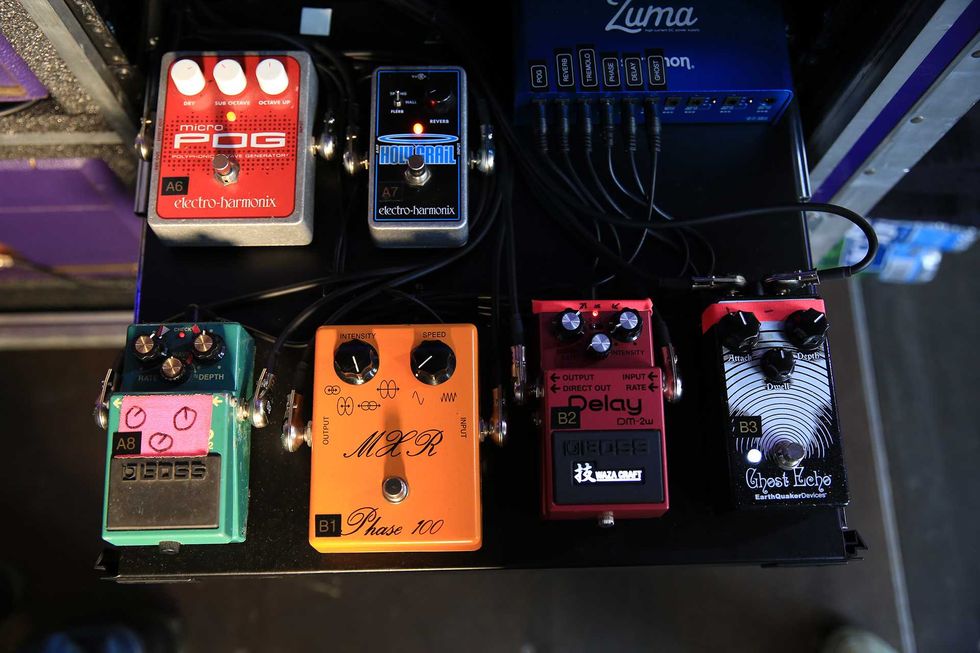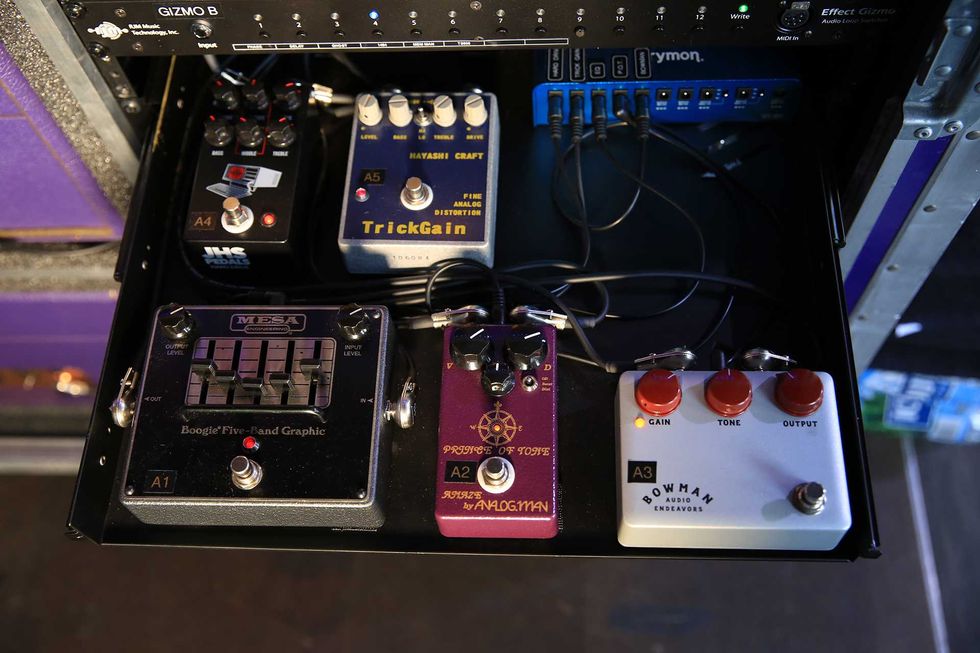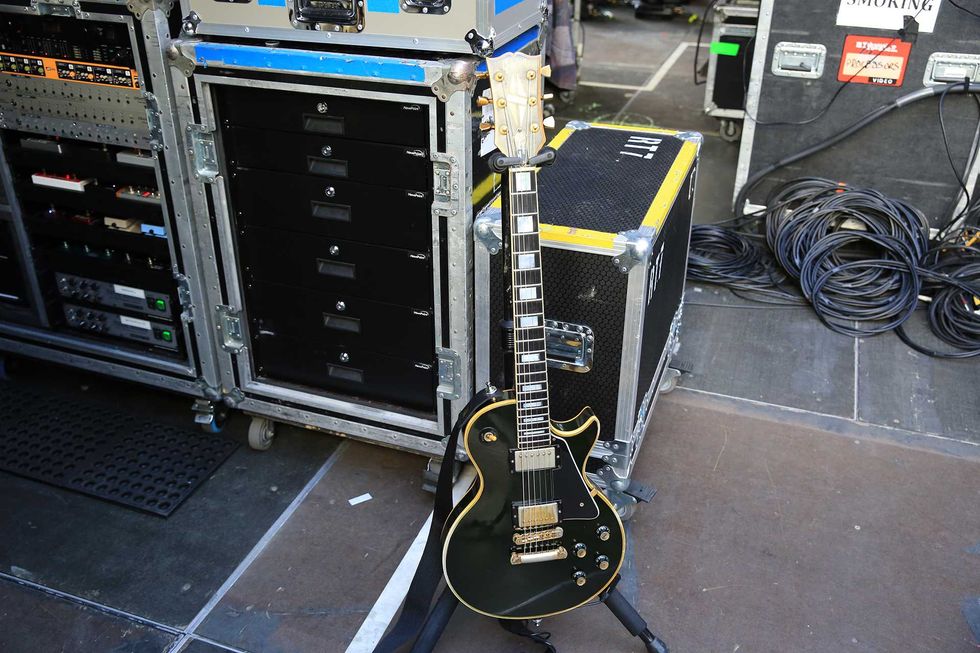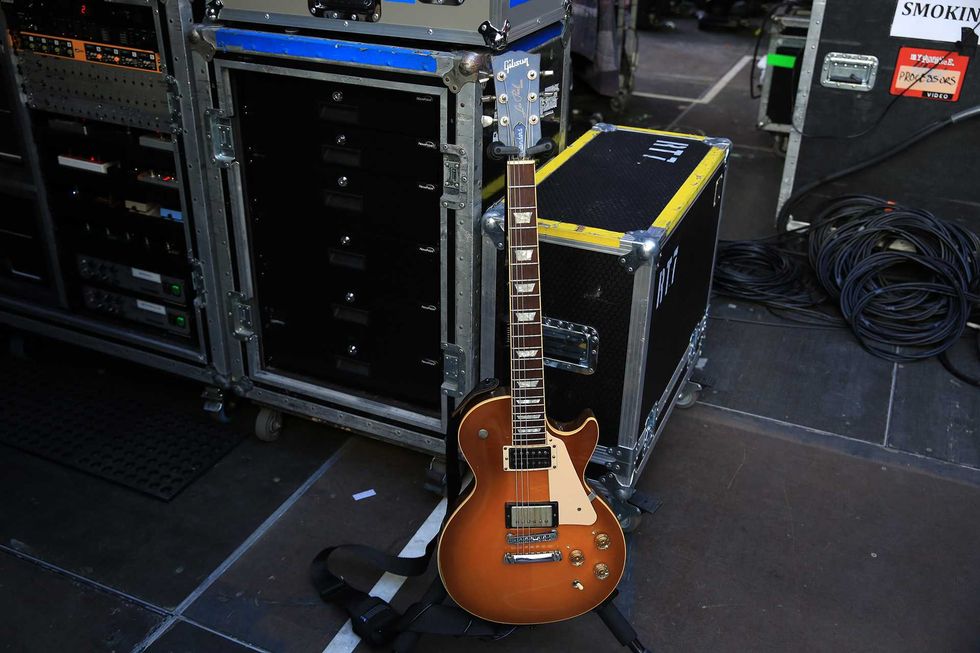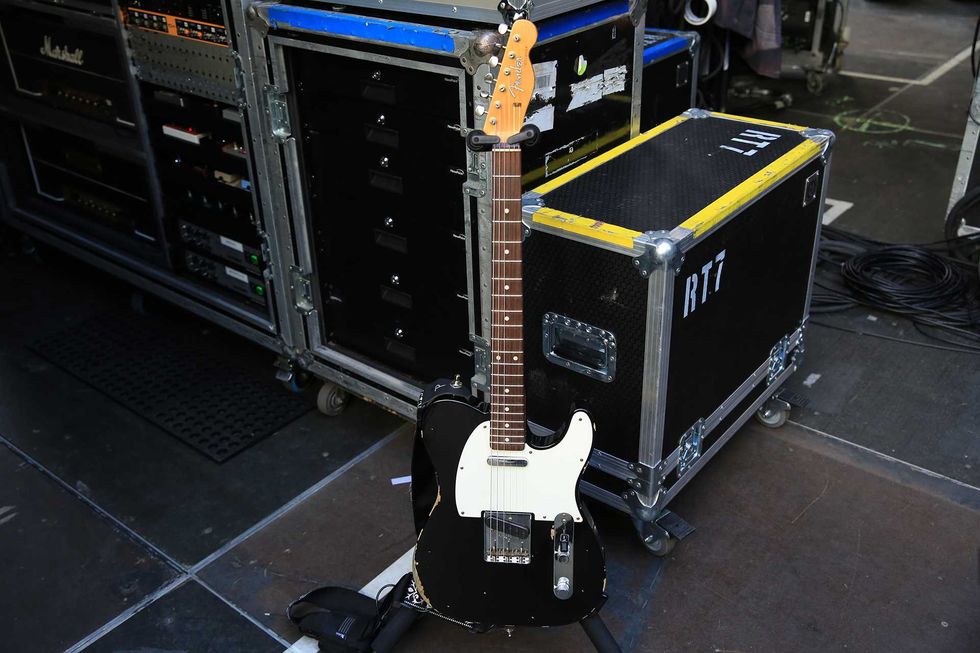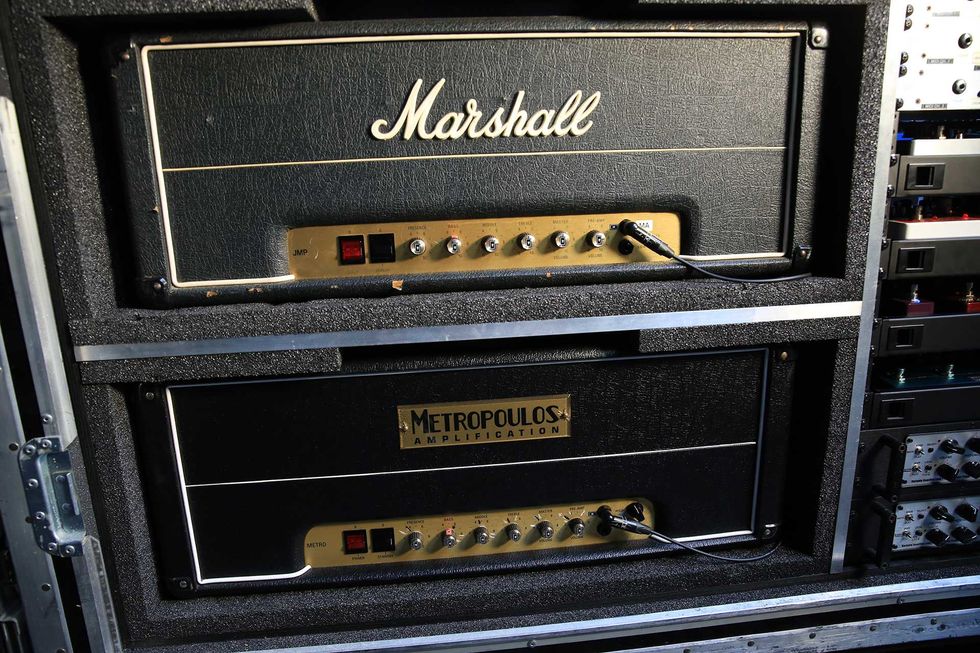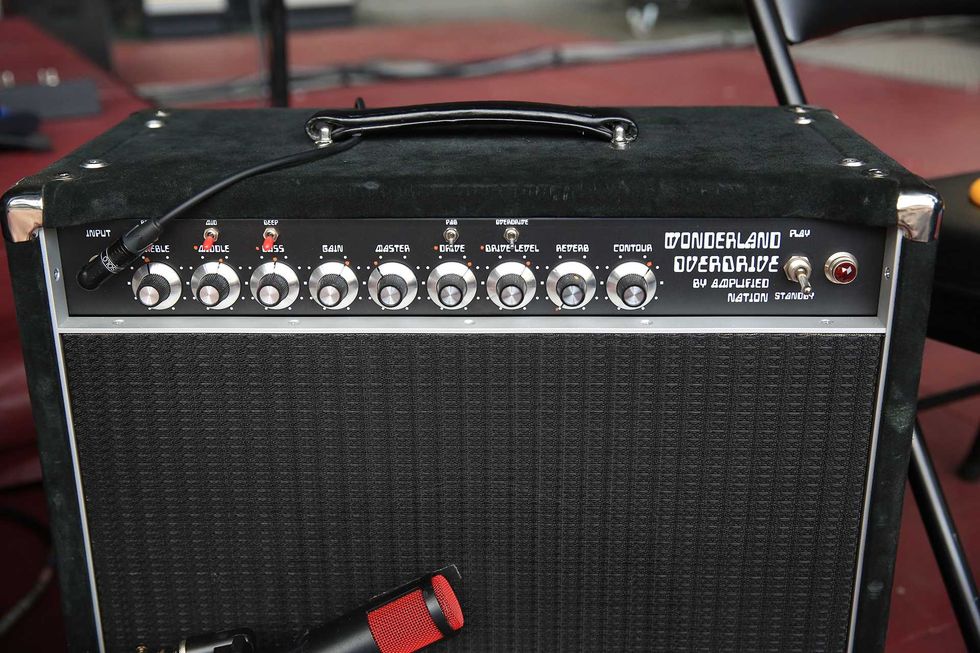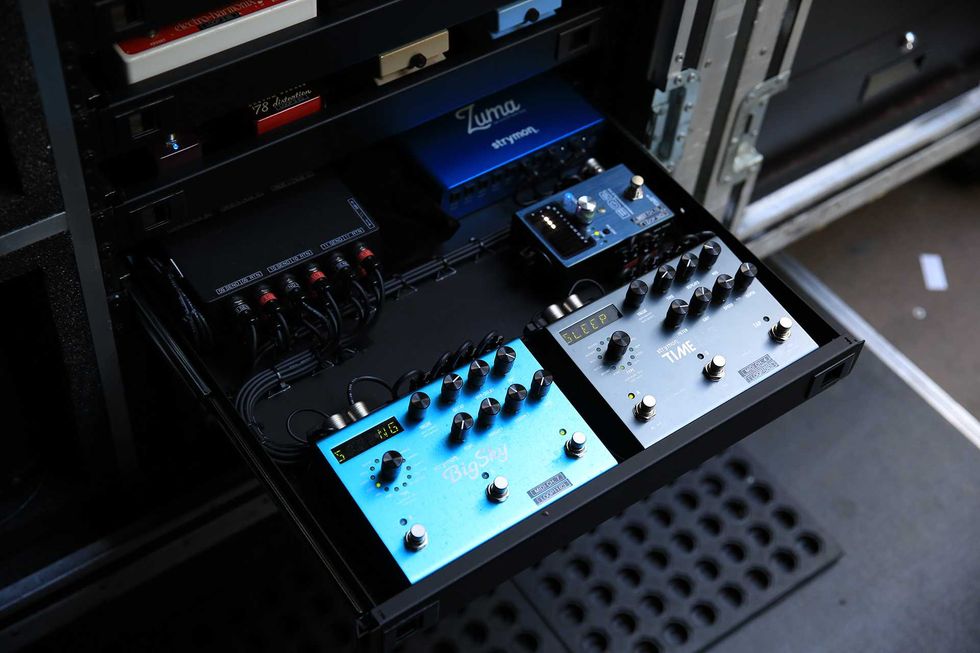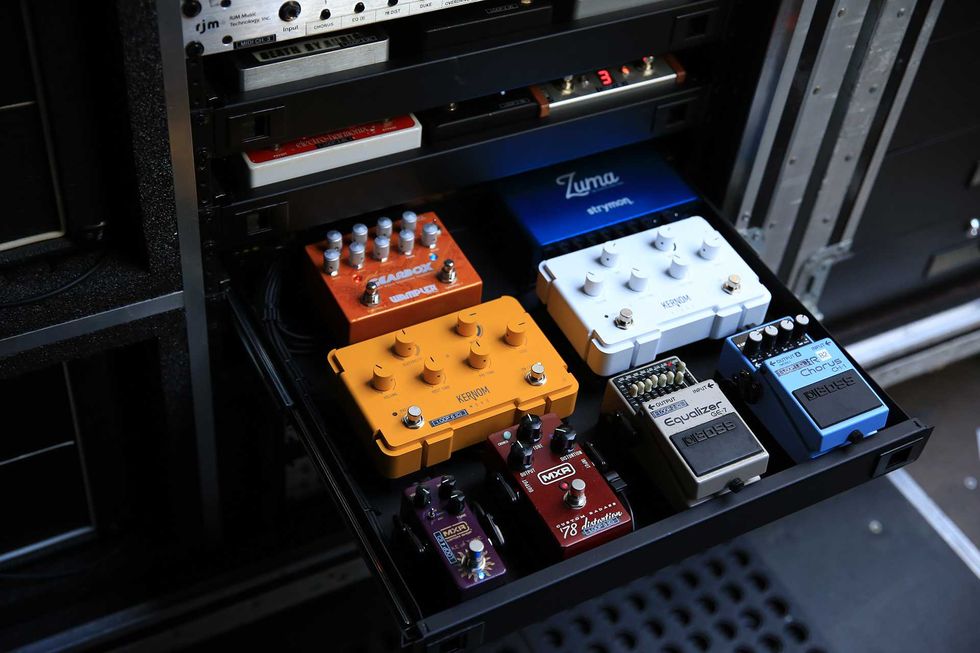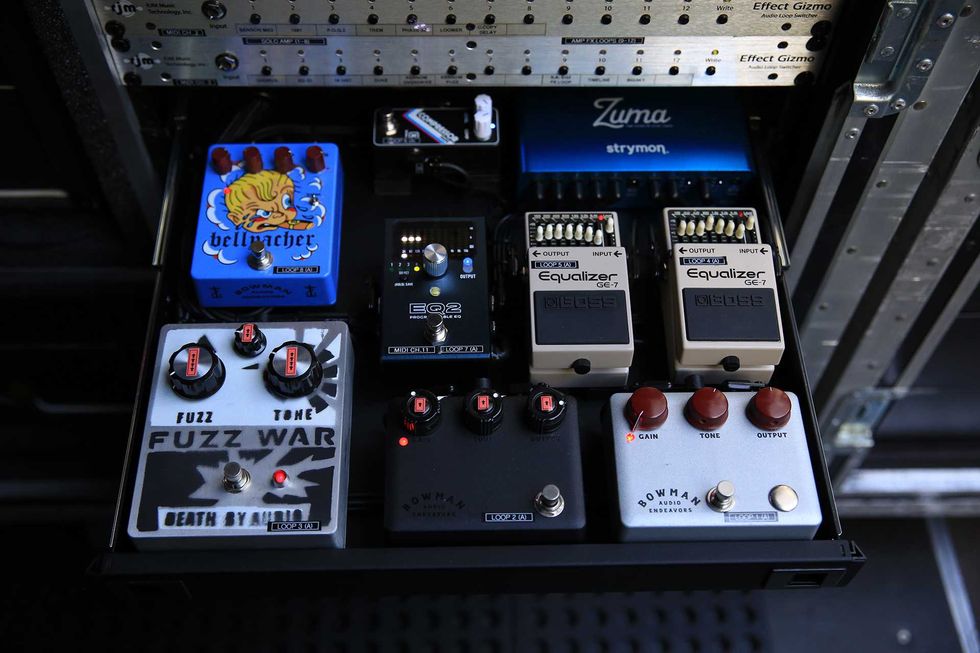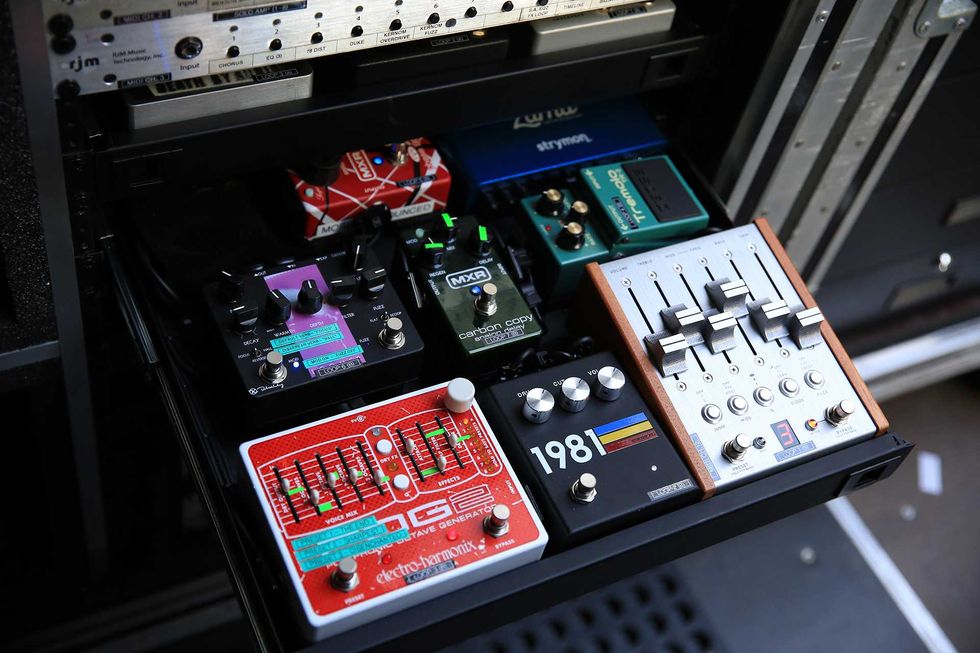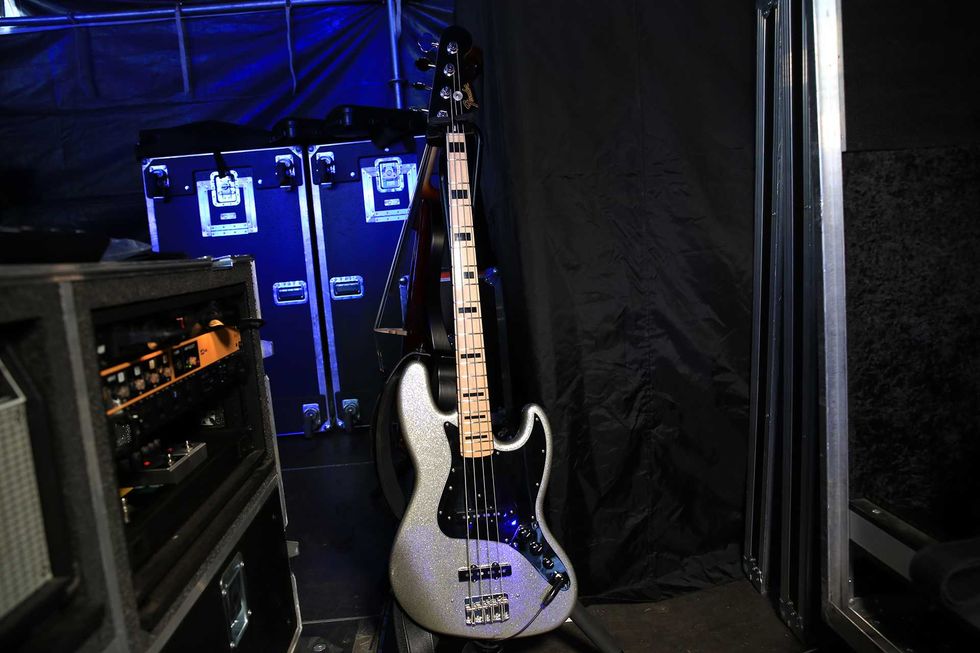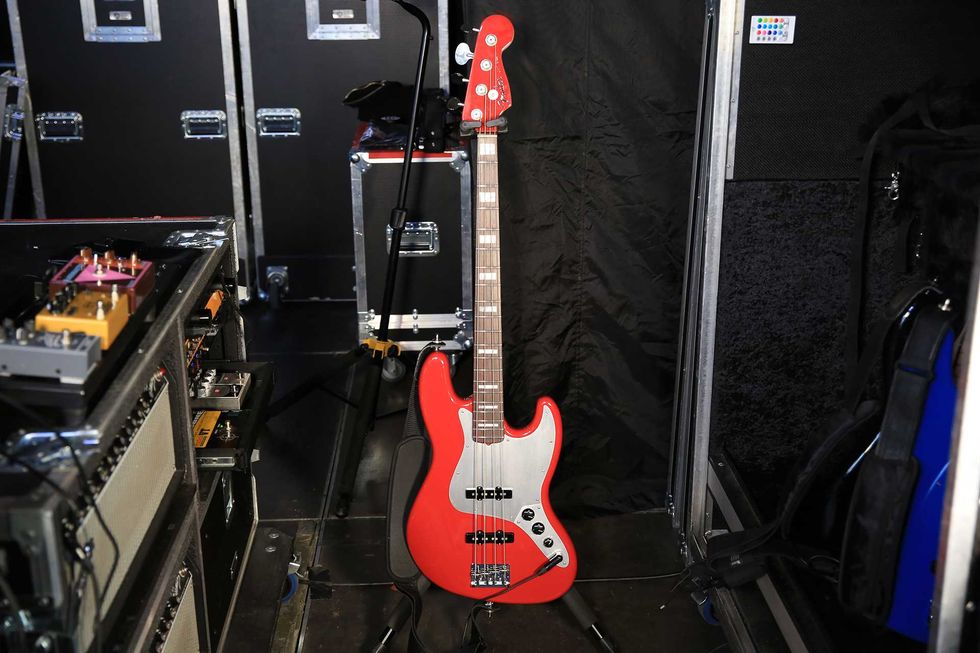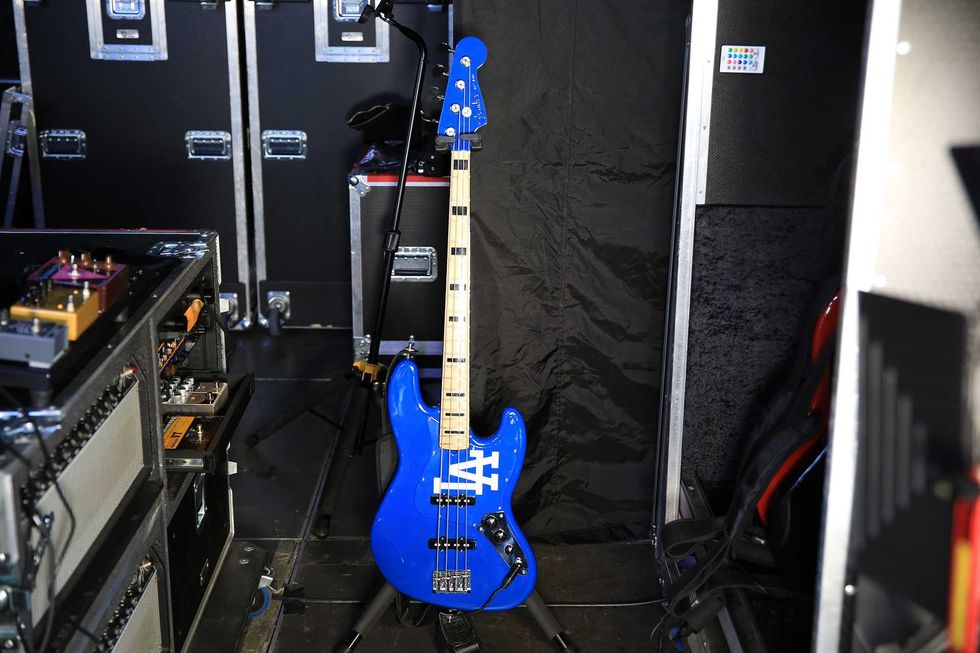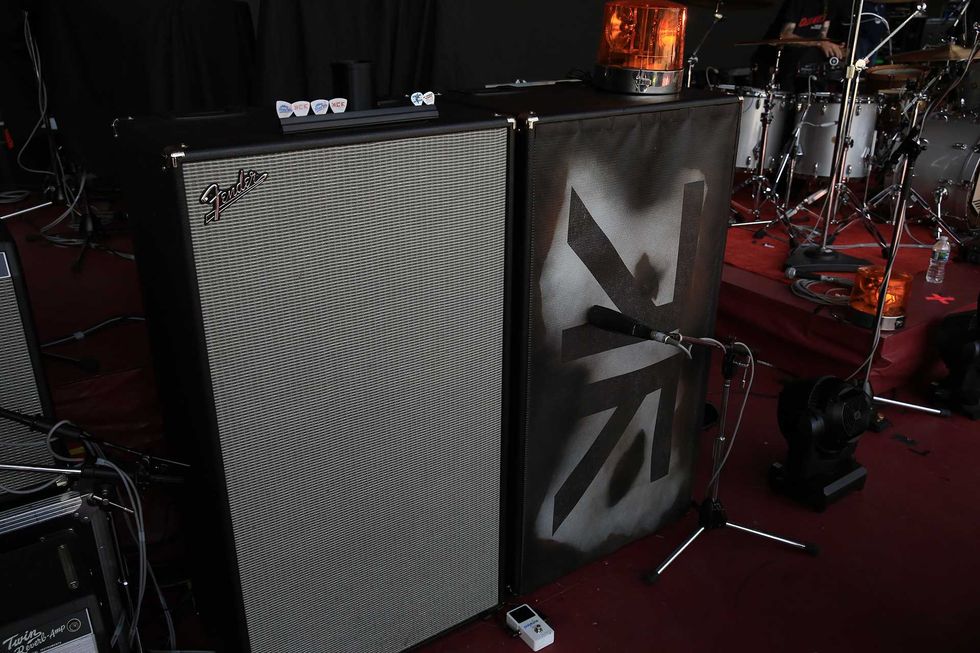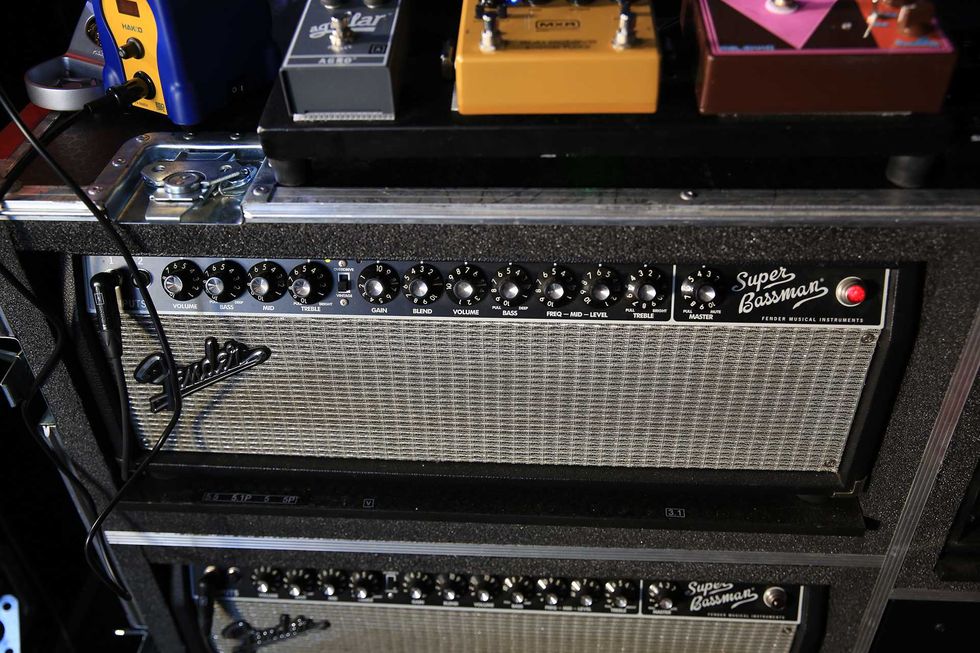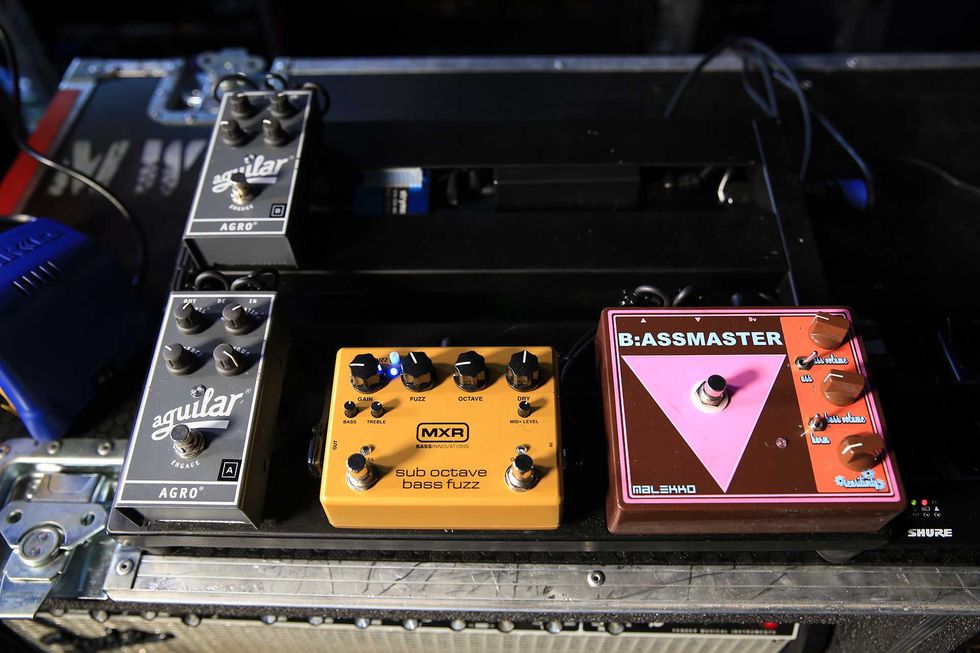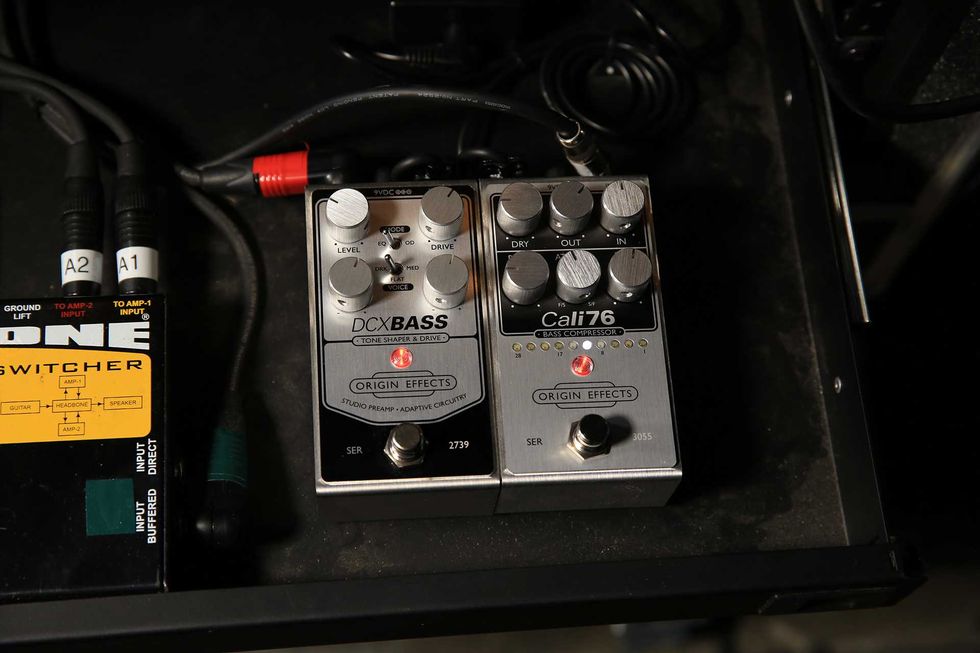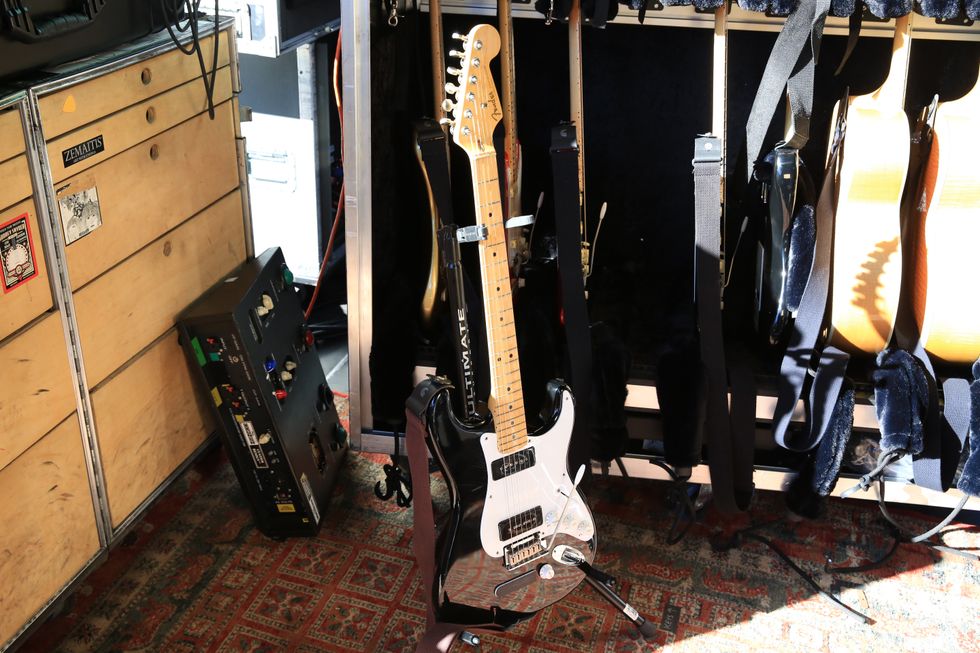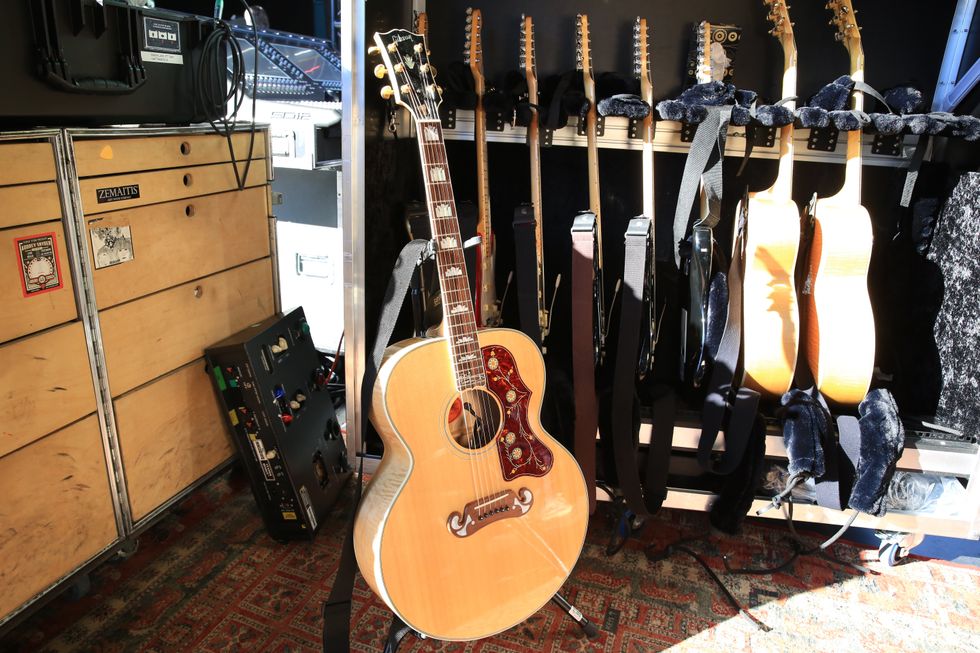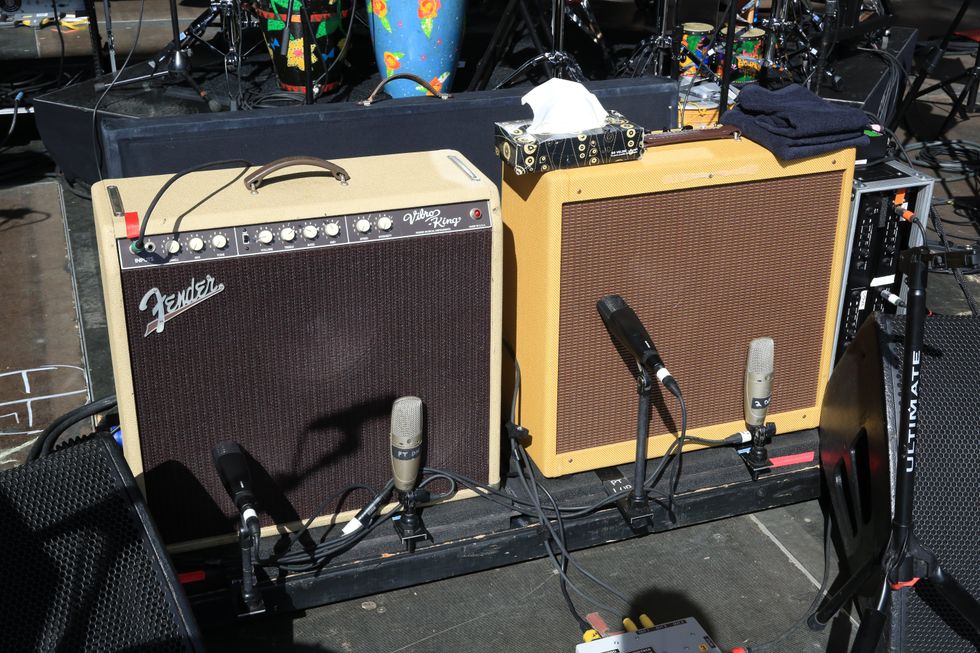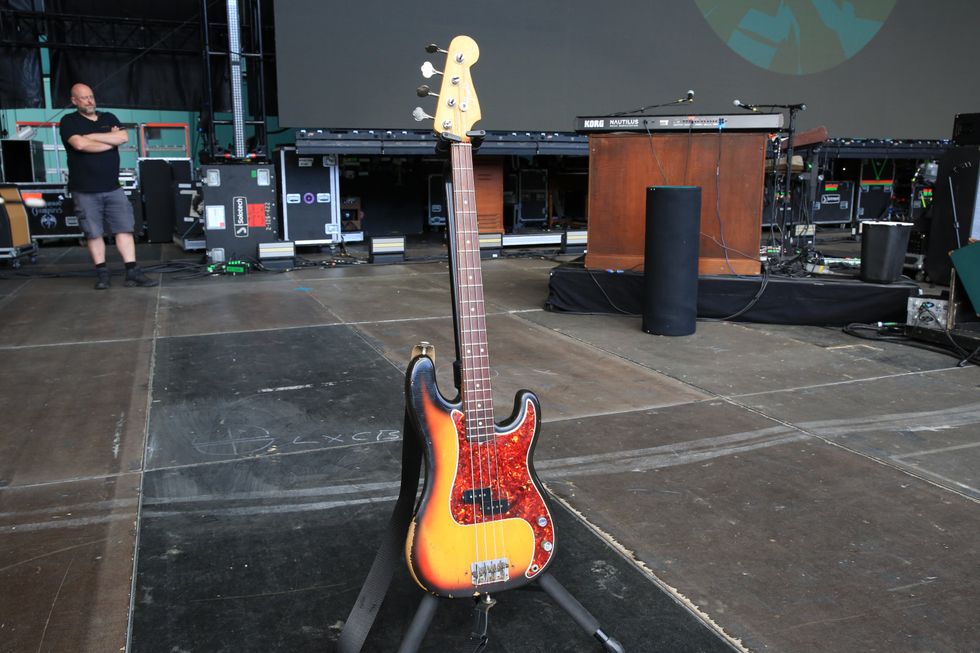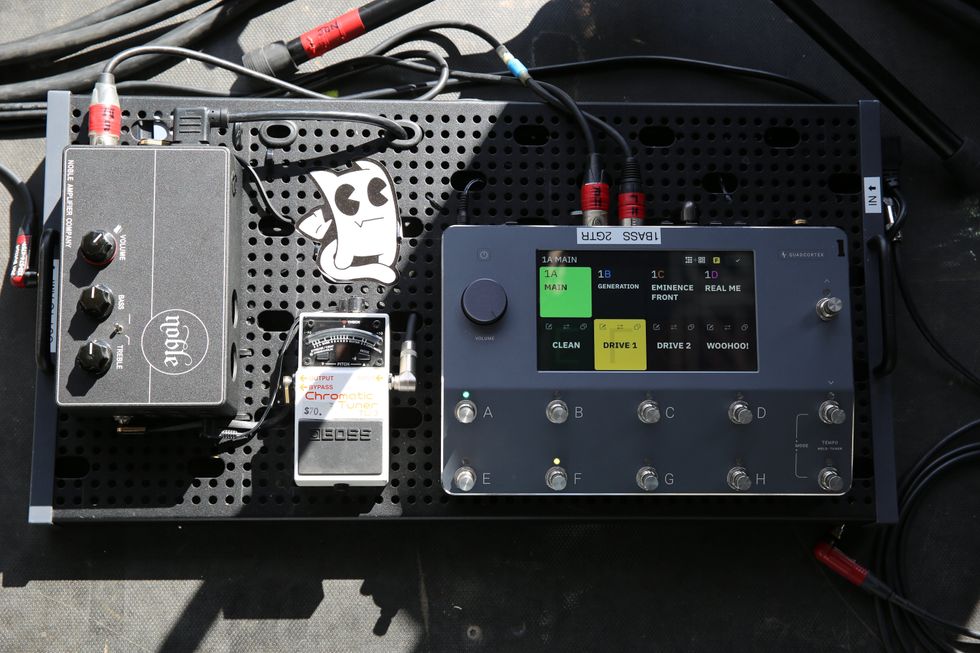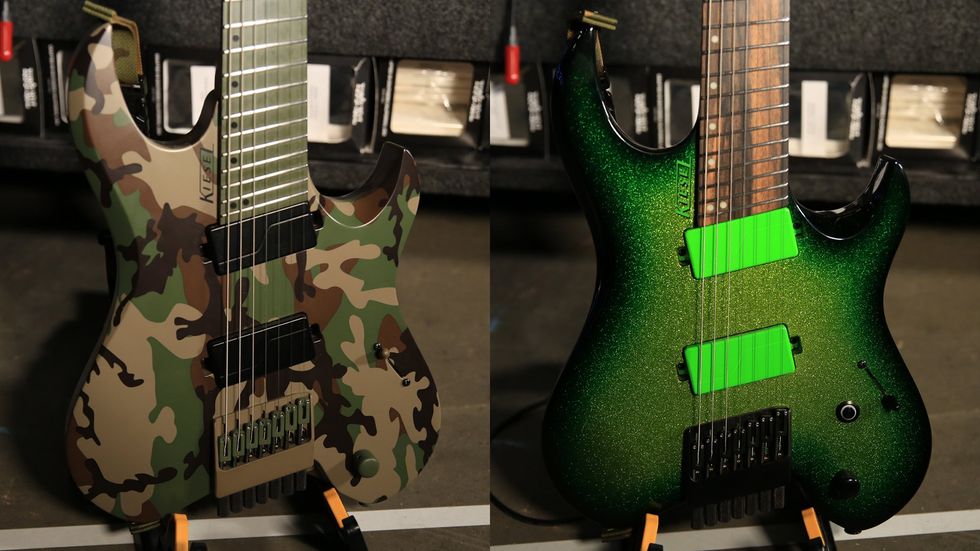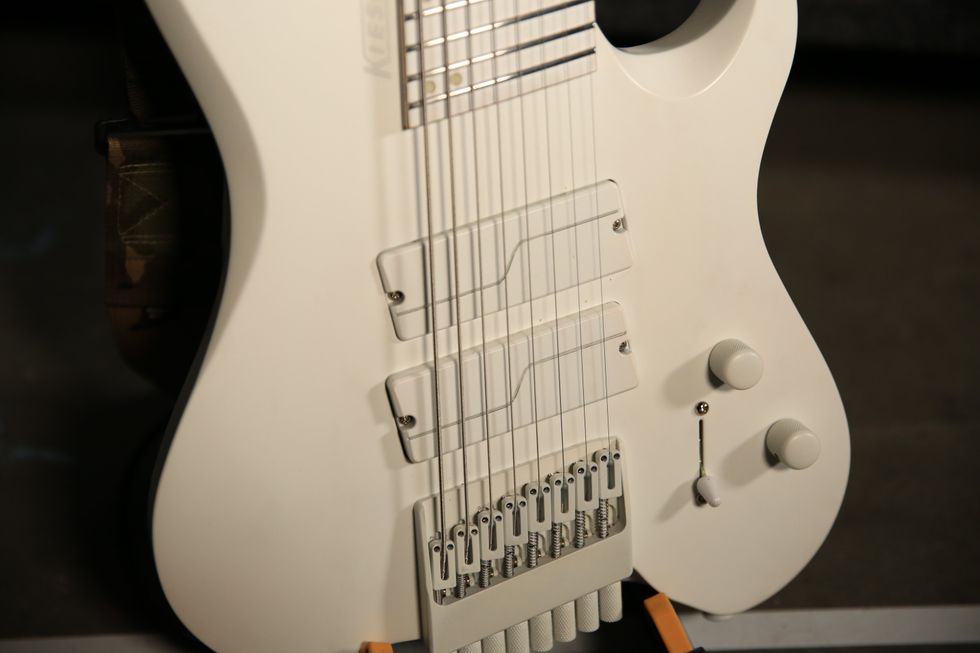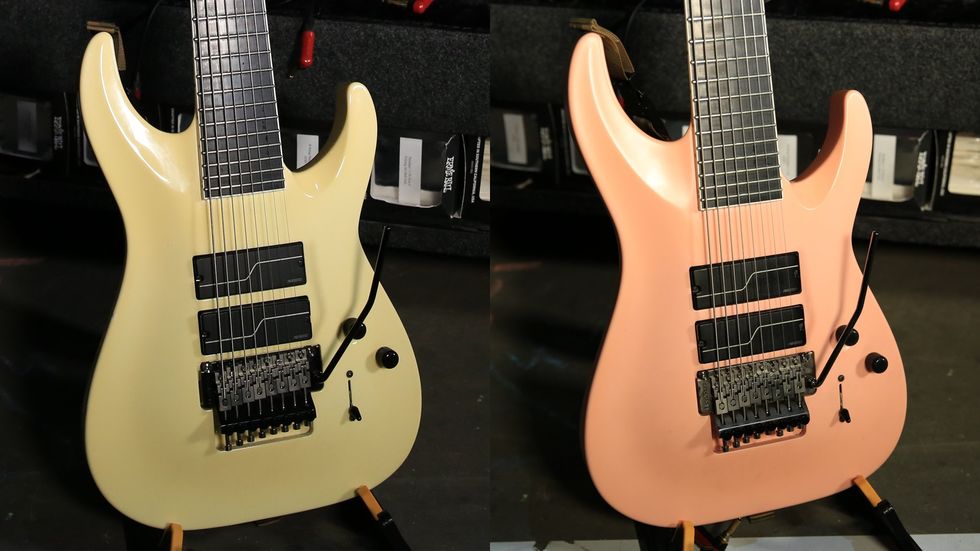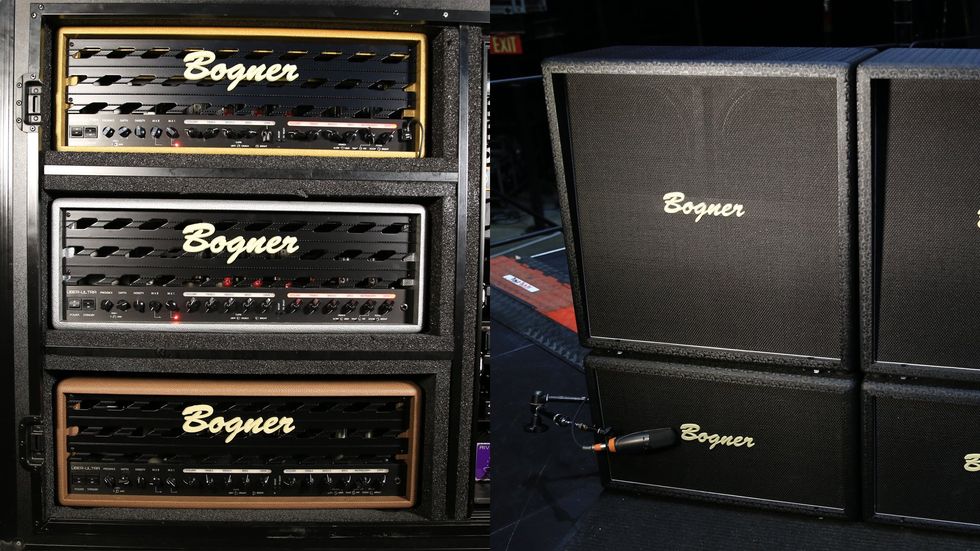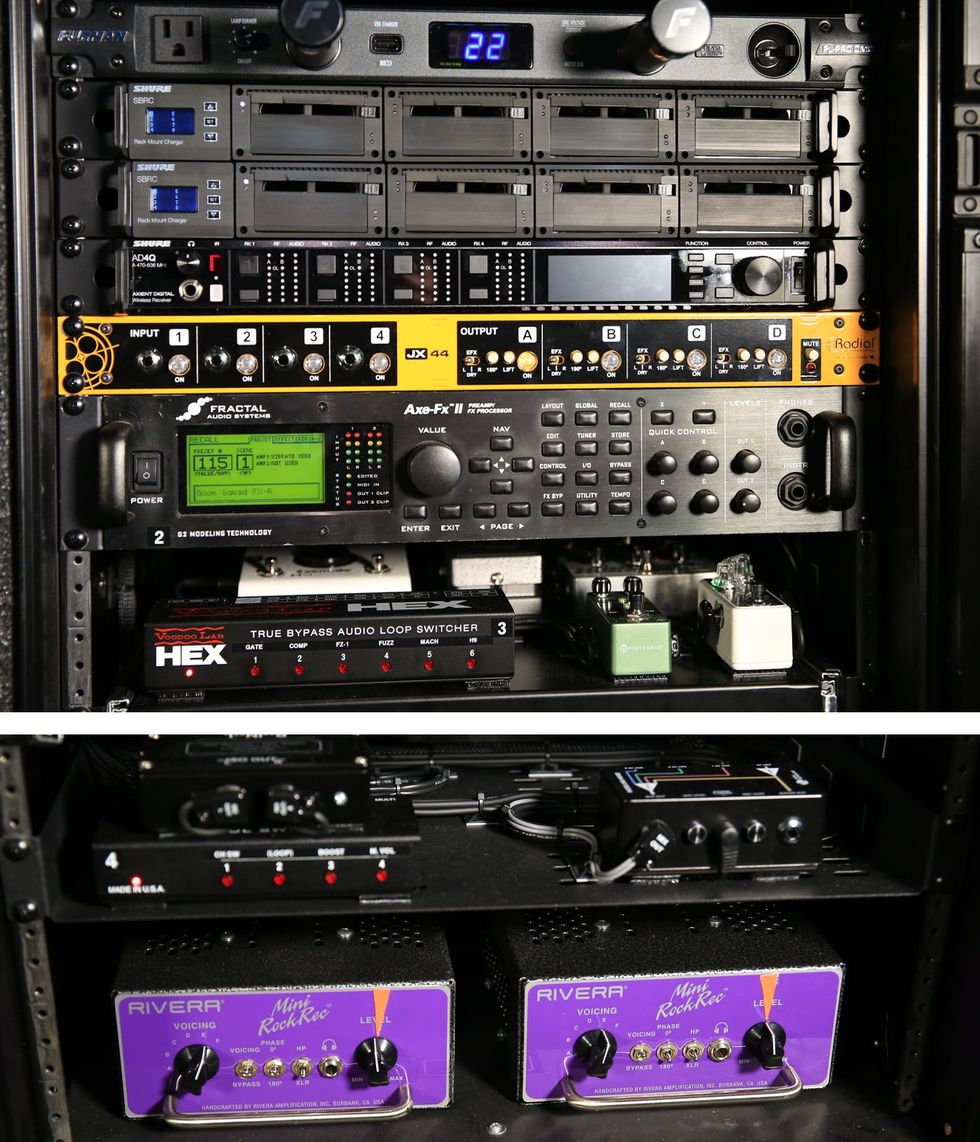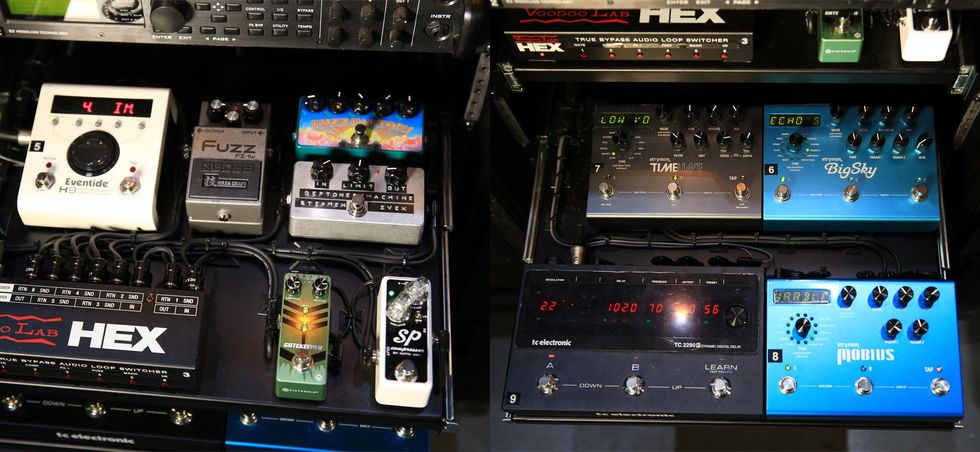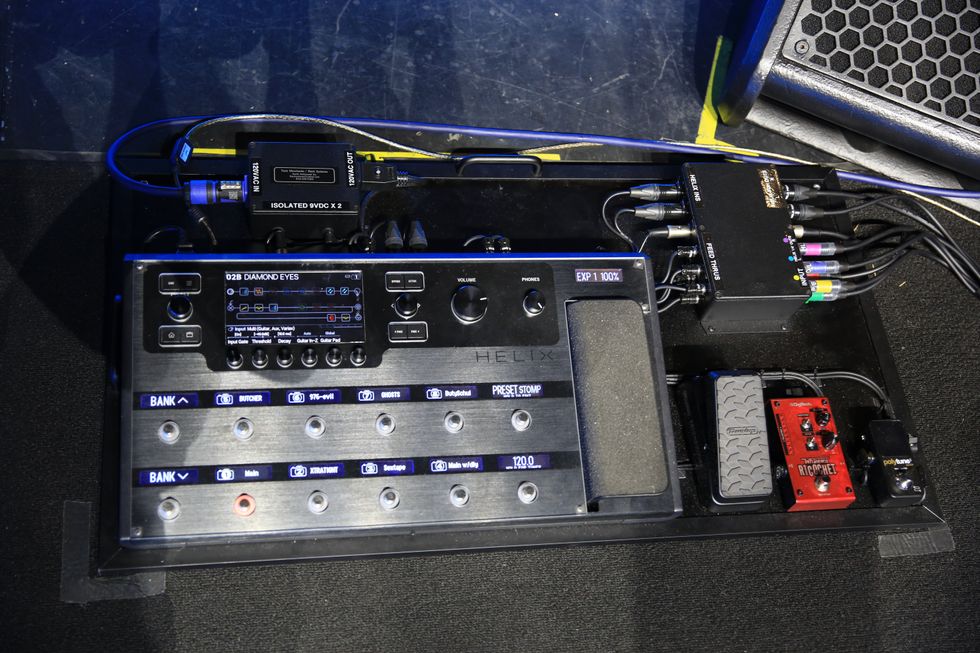Head-shredder Cody Chavez takes some classic Jackson 6-strings into the digital realm on the hardcore band’s latest tour.
We had the good fortune of catching up with California hardcore outfit Drain on their Good Good Tour, a year after the release of their 2023 LP, Living Proof. A few hours before the band ripped Nashville’s Brooklyn Bowl, guitarist Cody Chavez gave PG’s Perry Bean the scoop on how he achieves his brutal rhythm and lead tones that form the basis of the band’s thrashy, metallic hardcore.
Brought to you by D’Addario
Sparkly but Savage
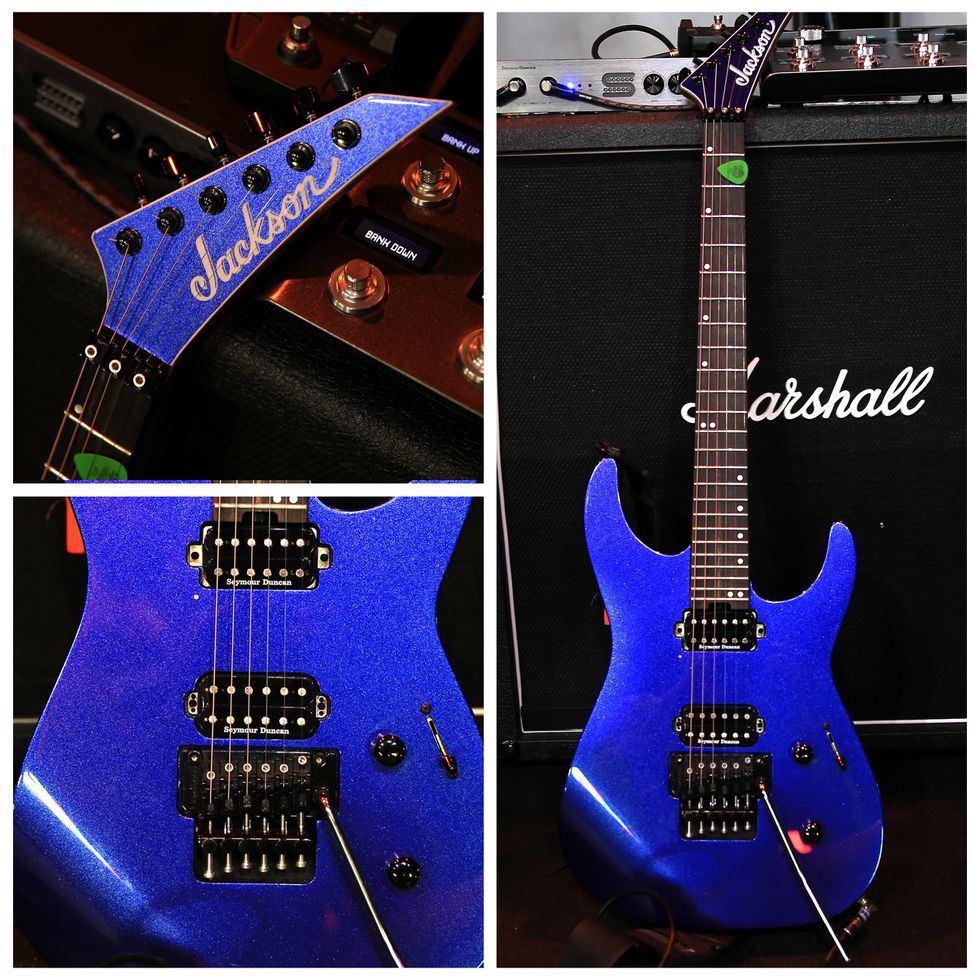
Chavez’s first workhorse is this Jackson Virtuoso 6-string, finished in a dazzling deep blue sparkle. The band has a deal with the legendary manufacturers of heavy-music machines, and Chavez leaves his mostly stock, with a Floyd Rose tremolo system, locking tuners, and Seymour Duncan pickups. Chavez used to roll with heavier gauges, but these days, he favors .009–.042 strings.
Frozen Flamethrower

This Jackson X Series Soloist SL3X DX is finished in an insanely cool design dubbed “frost byte crackle,” and is Chavez’s favorite of the two Jacksons. It’s super light, with a neck-through-body construction and three Jackson pickups: two mini humbucker rail pickups and one full-size humbucker.
Tone Master of Puppets

In the past, Chavez played through all sorts of holy-grail tube amplifiers. But when he tested a Jackson guitar through a Fender Tone Master Pro, he was smitten with the great sounds and intuitive interface, so he’s brought one out on the road. He runs both his lead and rhythm sounds through the EVH 5150 amp profile, with different virtual effects chains for each preset. For his base rhythm tones, he runs an always-on Tube Screamer plus a light chorus and EQ, with settings copped from Dimebag Darrell. For leads, a more spacey, intense, “triple double” chorus is applied along with a slick digital delay. Chavez runs his guitar to the Tone Master Pro via a wireless system.
Power Up

When he first got his Tone Master Pro, Chavez ran it right into his Marshall 4x12 cab, and he couldn’t figure out why it was so quiet. A friend clued him in that he’d need a power amp to run with it, so he picked up this Seymour Duncan PowerStage 700, which powers his signal through the Marshall cab. In the future, Chavez might go totally DI, but for now, he stands by the power of a beat-up speaker cabinet blasting out gnarly riffs every night.



![Rig Rundown: AFI [2025]](https://www.premierguitar.com/media-library/youtube.jpg?id=62064741&width=1245&height=700&quality=70&coordinates=0%2C0%2C0%2C0)


![Devon Eisenbarger [Katy Perry] Rig Rundown](https://www.premierguitar.com/media-library/youtube.jpg?id=61774583&width=1245&height=700&quality=70&coordinates=0%2C0%2C0%2C0)

